North Dakota's Last Lynching
N.D. Supreme Court Staff
In the early morning hours of January 29, 1931, a mob broke into the small stone jail at Schafer, North Dakota, and seized Charles Bannon. The mob hanged Bannon from a nearby bridge. It was North Dakota's last lynching.(1)

Bannon, who was 22 years old, had spent only a few days in the Schafer jail prior to the break-in. He been moved from the larger and more secure jail in Williston on January 23, 1931, so he could be arraigned in Schafer on charges that he murdered the six members of the Haven family. His father, James Bannon, was also confined in the Schafer jail, awaiting arraignment as an accomplice to the murder.(2)
A farm family disappears
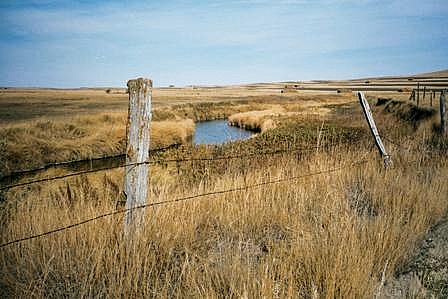
The Haven family lived on a farm about a mile north of Schafer, a village east of Watford City. The family had five members: Albert, 50, Lulia, 39, Daniel, 18, Leland, 14, Charles, 2, and Mary, 2 months old. As of February 1930, the family had lived on their farm more than ten years. They owned household goods including a piano and a radio as well as "considerable livestock, feed and machinery."(3)
No member of the family was seen alive after February 9, 1930.(4)
Bannon had worked as a hired hand for the Havens. He stayed on the Haven farm after the family disappeared, claiming that he had rented the place. He told neighbors that the family had decided to leave the area.(5)
Bannon's father James joined him at the farm in February 1930. Together, they worked the land and cared for the Haven family's livestock through the spring, summer and fall of the year.(6)
Neighbors became suspicious by October 1930, however, after Bannon started selling off Haven family property and crops. Bannon's father then left the area, saying that he was going to try to find the Haven family.(7)
James went to Oregon, where Bannon said the Haven family had gone. James wrote a letter on December 2, 1930, to Bannon from Oregon, in which he advised Bannon to watch his step and "do what is right."(8)
In December 1930, Bannon was jailed on grand larceny charges. In the course of the investigation that followed, authorities discovered that the Haven family had been murdered.(9)
The hired hand confesses
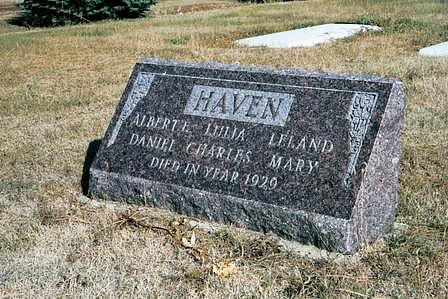
On December 12, 1930, Bannon gave a statement to a deputy sheriff in which he admitted involvement in killing the Haven family, but claimed a "stranger" acted as instigator.(10)
The next day, in a lengthy confession to his attorney and his mother, Bannon admitted killing the Haven family in a violent fracas that followed Bannon's accidental shooting of the eldest child, Daniel. Bannon suggested in this confession that he was forced to kill Leland, Lulia and Albert Haven because they tried to kill Bannon after he shot Daniel.(11)
After Bannon confessed, authorites tracked down his father James in Oregon. James was accused of complicity in the murders and extradited back to North Dakota.(12)
In a final confession that he wrote out himself in January 1931, Bannon again admitted killing the rest of the Haven family after accidentally shooting Daniel. In this confession, however, Bannon did not claim that he acted in self-defense when he killed the other members of the family -- instead he said he killed them because he was scared.(13)
In his last two confessions, Bannon stressed that he acted alone in killing the Havens. Bannon tried to convince authorities that his parents, in particular his father James, knew nothing about the murders. Nonetheless, the authorities kept James in custody.(14)
Waiting in the Schafer jail
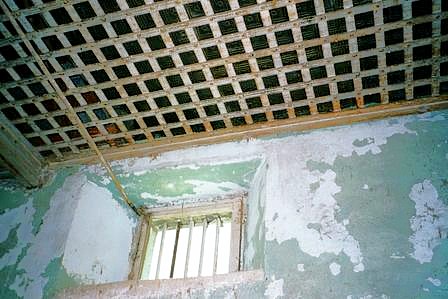
Bannon, his father James, Deputy Sheriff Peter Hallan, and Fred Maike, who was in jail on theft charges, were present in the Schafer jail on the night of January 28-29, 1931. A crowd of men in masks arrived at the jail sometime between 12:30 and 1:00 a.m. on January 29, looking for Bannon.(15)
The sight of lights flickering through his windows woke Sheriff Syvert Thompson, who lived near the jail, and he went to the scene to investigate. The mob captured him and led him away from the jail.(16)
Thompson and Hallan said that the crowd numbered at least 75 men in at least 15 cars.(17)
The mob battered down the front door of the jail and overpowered Deputy Hallan. After he refused to tell them where the keys to Bannon's cell were, the mob escorted Hallan out of the jail. Using the timbers they had used to break down the jail door, the mob began work battering down the cell door. Witnesses said the mob appeared disciplined and well-organized, going about their work as if under strict orders.(18)
Maike told investigators that the mob had so much trouble trying to break down the cell door that they almost gave up. After the mob broke the door down, Bannon surrendered and pleaded that his father not be harmed.(19)
Members of the mob brought in a rope and placed a noose around Bannon's neck. They dragged him from the jail. The mob put Deputy Hallan in a cell with Bannon's father and Maike, who had been left alone.(20)
Outside, Sheriff Thompson heard the men demanding that Bannon "tell the truth" or face hanging. Bannon told them that he had told the truth.(21)
After taking Bannon, the mob shoved Sheriff Thompson into the jail cell with Hallan, barricading the door. Thompson and Hallan were not able to free themselves until after the mob dispersed.(22)
The lynch mob first took Bannon to the nearby Haven farm, planning apparently to hang him on the spot the family died. The caretaker of the farm ordered the crowd off the property, threatening to shoot if the mob did not leave.(23)
Lynched over Cherry Creek
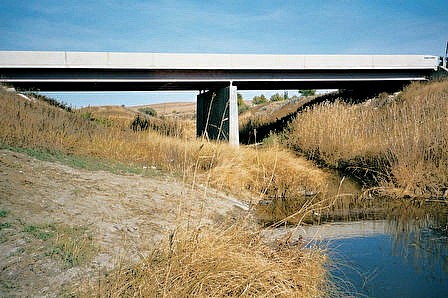
The mob took Bannon to the bridge over Cherry Creek, a half-mile east of the jail. The new high bridge had been built in the summer of 1930. Bannon was pushed over the side of the bridge with the noose still around his neck. Authorities said the lynchers use a half-inch rope, with one end tied to a bridge railing and the other tied in a standard hangman's knot by someone with "expert knowledge."(24)
Bannon was buried in Riverside Cemetery in Williston.(25)
Governor George Shafer called the lynching "shameful" and ordered an immediate investigation. Attorney General James Morris (later a Supreme Court justice), Adjutant General G.A. Fraser and Gunder Osjord, head of the Bureau of Criminal Apprehension, were sent to the scene. Morris interviewed witnesses and examined evidence from the lynching.(26)
The rope used was of special interest to Morris. He said that the noose had been tied by "someone with expert knowledge." He also pointed out that the rope had a thread of red hemp running through it, which could be a manufacturer's mark. Morris concluded that "the lynching was well-planned in advance" and that "three or more leaders . . . kept the mob organized and under control."(27)
Morris said that the governor had ordered the investigators to "go to the bottom" of the lynching. The state investigation, however, was not fruitful: no member of the lynch mob was ever arrested and Morris concluded after less than a week of investigation that it would be impossible to identify any member of the lynch mob.(28)
The Federal Council of Churches investigated the lynching in the spring of 1931. The Council found that even though feelings ran high against Bannon in the community, authorities "took the prisoner back to the scene of the crime, put him in a makeshift jail, and thus gave every chance to a mob." Frank Vrzralek surveyed North Dakota lynchings in 1990 and noted that one similarity among several lynching cases was "grossly inadequate" protection for the prisoners.(29)
On learning of the Council's work, Morris wrote Rev. Howard Anderson of Williston, who conducted the investigation. Morris wanted to know if Anderson had obtained any information that might help the authorities; Anderson responded that the Council had focused on the circumstances leading up to the lynching. He stated:
It did not come within the scope of my investigation to try to discover who the members of the lynching mob were. That, it seems to me, is the duty of the sheriff and state's attorney of McKenzie County.
Whether or not these duly constituted officials have performed their duty in this, or to the full in their holding of Bannon, is something you know as well, or better, than I.(30)
After escaping the lynch mob, Bannon's father, James, was tried for the Haven murders. Concerned about James' safety, attorney W.A. Jacobsen asked Morris what steps would be taken "to see that this man is kept alive during the time he is in the county." The trial was moved to Divide County, where James was convicted and sentenced to life in prison.(31)
Jacobsen and E.J. McIlraith, James' attorneys, argued on appeal that James was not involved in the murders and that the evidence did not support the charges against him. The attorneys pointed out that the "witnesses for the State were so anxious to convict the defendant . . . that they made their testimony to suit the situation, and made the testimony so positive as to convict him, if there was any possibility of doing so." The North Dakota Supreme Court, however, upheld James' conviction.(32)
James was admitted to the state penitentiary on June 29, 1931. As he left the jail in Minot, he told the guard "you are seeing an innocent man go to prison." When James sought parole in 1939, Attorney General Alvin Strutz (later a Supreme Court justice) was sent to McKenzie County to investigate whether the community believed James was innocent. In a report dated May 18, 1939, Strutz concluded that the belief in the community was that James was guilty at the very least of helping cover up the murders. James was released by the state Pardon Board on Sept. 12, 1950. He was 76-years-old.(33)
In the wake of the Bannon lynching, State Sen. James P. Cain of Stark County introduced a bill to revive capital punishment for murder in North Dakota. Supporters of the bill argued that the lynching would not have occurred if Bannon could have faced a death sentence. The North Dakota Senate rejected the bill on a 28 to 21 vote.(34)
Schafer today
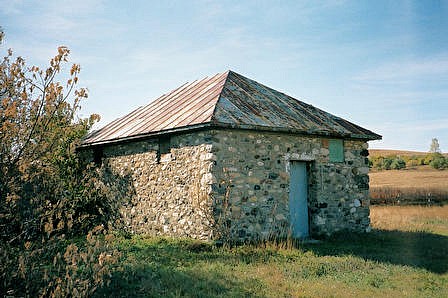
At the time of the Haven murders, Schafer was county seat of McKenzie County. Today, all that remains of Schafer is a cluster of buildings, including an abandoned school and the Schafer jail building. A sign stands next to the jail, outlining the history of the jail and the events of January 29, 1931, when Charles Bannon "was taken by an angry mob and lynched." (35)
Strutz concluded his 1939 report on the lynching with these thoughts:
There is no doubt in my mind but that some prosecution should have been commenced for the lynching of Charles Bannon. No conviction could have been had in McKenzie County, it is true, but the State might have secured a change of venue and, even though no conviction could have been had it seems to me that such a crime should not be allowed to have been committed without at least an attempt to punish those who perpetrated the same. It may not have been a popular thing to do in McKenzie County but on the other hand it would have been the right thing.(36)
Schafer is approximately five miles east of Watford City on North Dakota Highway 23.
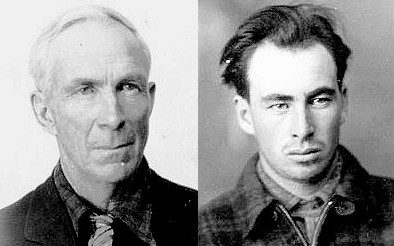 |
Accused killer Charles Bannon, right, and his father James
|
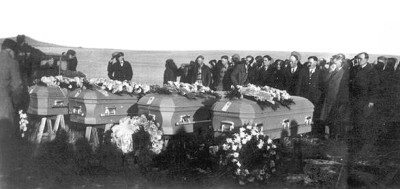 |
Murdered members of the Haven family were buried together in Schafer Cemetery
|
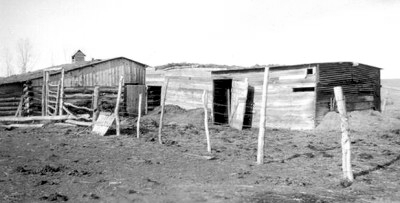 |
The Haven farmyard: The killings started in the barn, left, and Bannon hid the bodies in the shed, right
|
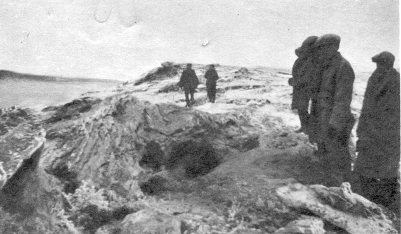 |
The remote cave where Lulia Haven's body was found
|
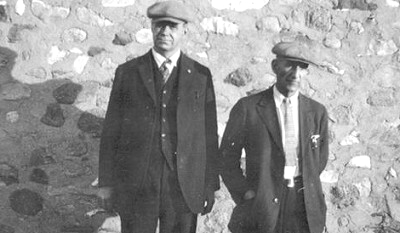 |
McKenzie County Sheriff Syvert Thompson and Deputy Peter Hallan tried to stop the lynch mob
|
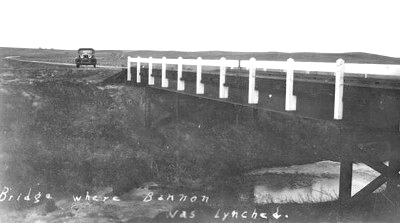 |
Bannon was hung from this bridge over Cherry Creek
|
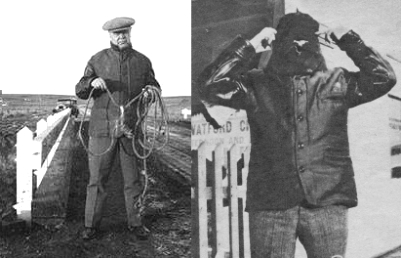 |
Watford City newspaper editor James Curran displays the noose used to hang Bannon and shows how the lynchers disguised themselves
|

Footnotes:
1. See State Historical Society of North Dakota Website.
2. Williston Herald, Will Arraign Bannons Soon, Says Attorney, Jan. 15, 1931, at p. 1. Williston Herald, Mob Lynches Chas. Bannon at Schafer, Jan. 29, 1931, at p. 1.
3. State v. Bannon, 62 N.D. 517, 244 N.W. 1 (1932). See Williston Herald, No Trace Found of Missing Haven Family, Nov. 20, 1930, at p. 1.
4. Bannon, 244 N.W. at p. 1. See Williston Herald, No Trace Found of Missing Haven Family, Nov. 20, 1930, at p. 1.
5. Bannon, 244 N.W. at p. 1. See Williston Herald, No Trace Found of Missing Haven Family, Nov. 20, 1930, at p. 1. After Bannon was lynched, the Associated Press reported in the Bismarck Tribune that:
The Havens were reserved people, who fraternized little with their neighbors. There was not the strong bond between them as there exists between the many settler who came to this section to pioneer. So little was known of the Havens' affairs that when Bannon said they disappeared his story was first accepted. For nearly nine months, Bannon lived on the farm, and it was not until they failed to pay a farm loan that had come due that an opportunity was afforded to investigate their disappearance.
Bismarck Tribune, Believe Lynchers Waited Hoping for True Account, Jan. 29, 1931, at p. 2.
6. Bannon, 244 N.W. at p. 1. See Williston Herald, No Trace Found of Missing Haven Family, Nov. 20, 1930, at p. 1.
7. Bannon, 244 N.W. at p. 7 (letter).
8. Bannon, 244 N.W. at p. 7 (letter).
9. Williston Herald, Bannon Alone in Killing of Haven Family, Dec. 18, 1930, at p. 1. Bismarck Tribune, Believe Lynchers Waited Hoping for True Account, Jan. 29, 1931, at p. 2.
10. Bannon, 244 N.W. at p. 8 (statement).
11. Bannon, 244 N.W. at pp. 8-11 (confession). See Williston Herald, Bannon Alone in Killing of Haven Family, Dec. 18, 1930, at p. 1.
12. See Williston Herald, Bannon Alone in Killing of Haven Family, Dec. 18, 1930, at p. 1; Williston Herald, Bannon Senior in Jail Here, Dec. 25, 1930, at p. 1; Williston Herald, Will Arraign Bannons Soon, Says Attorney, Jan. 15, 1931, at p. 1.
13. Bannon, 244 N.W. at pp. 11-12 (final confession). See Williston Herald, Will Arraign Bannons Soon, Says Attorney, Jan. 15, 1931, at p. 1.
14. See Williston Herald, Mob Lynches Chas. Bannon at Schafer, Jan. 29, 1931, at p. 1; Bismarck Tribune, Charles Bannon, Confessed Slayer of 6, Lynched by Mob, Jan. 29, 1931, at p. 1.
15. Bismarck Tribune, Charles Bannon, Confessed Slayer of 6, Lynched by Mob, Jan. 29, 1931, at p. 1.
16. Bismarck Tribune, Mob Took Killer to Scene of Murders Before Hanging Him, Jan. 30, 1931, at p. 1. Bismarck Tribune, Few New Facts are Uncovered During Coroner's Inquest, Jan. 31, 1931, at p. 1.
17. Bismarck Tribune, Mob Took Killer to Scene of Murders Before Hanging Him, Jan. 30, 1931, at p. 1. Bismarck Tribune, Few New Facts are Uncovered During Coroner's Inquest, Jan. 31, 1931, at p. 1.
18. See Williston Herald, Mob Lynches Chas. Bannon at Schafer, Jan. 29, 1931, at p. 1; Bismarck Tribune, Charles Bannon, Confessed Slayer of 6, Lynched by Mob, Jan. 29, 1931, at p. 1; Bismarck Tribune, Believe Lynchers Waited Hoping for True Account, Jan. 29, 1931, at p. 2; Bismarck Tribune, Mob Took Killer to Scene of Murders Before Hanging Him, Jan. 30, 1931, at pp. 1, 3; Bismarck Tribune, Few New Facts are Uncovered During Coroner's Inquest, Jan. 31, 1931, at p. 1.
19. Bismarck Tribune, Mob Took Killer to Scene of Murders Before Hanging Him, Jan. 30, 1931, at p. 1. Bismarck Tribune, Few New Facts are Uncovered During Coroner's Inquest, Jan. 31, 1931, at p. 1. Bismarck Tribune, Elder Bannon Thought He Would Be Killed Too, Feb. 2, 1931, at p. 1.
20. Bismarck Tribune, Mob Took Killer to Scene of Murders Before Hanging Him, Jan. 30, 1931, at p. 1. Bismarck Tribune, Few New Facts are Uncovered During Coroner's Inquest, Jan. 31, 1931, at p. 1. Bismarck Tribune, Elder Bannon Thought He Would Be Killed Too, Feb. 2, 1931, at p. 1.
21. Bismarck Tribune, Mob Took Killer to Scene of Murders Before Hanging Him, Jan. 30, 1931, at p. 1. Bismarck Tribune, Few New Facts are Uncovered During Coroner's Inquest, Jan. 31, 1931, at p. 1. Bismarck Tribune, Elder Bannon Thought He Would Be Killed Too, Feb. 2, 1931, at p. 1.
Bannon's multiple and conflicting stories about how the murders took place seem to have been one factor that incited the lynch mob. For example, in his Dec. 12, 1930, statement, he admitted witnessing the murders but claimed that another man committed them. He apparently convinced his mother that this was the "true" story of the murders. Bismarck Tribune, Mob Took Killer to Scene of Murders Before Hanging Him, Jan. 30, 1931, at p. 3. An Associated Press story reported that "[m]any persons were of the belief that Bannon was spared earlier violence because of the feeling prevalent here that he would ultimately give a true account of the killings." Bismarck Tribune, Believe Lynchers Waited Hoping for True Account, Jan. 29, 1931, at p. 2.
The lynchers may not have known that, in addition to his written confessions, Bannon also "walked through" the murders during a January 1931 visit to the crime scene with several county officials including longtime McKenzie County Judge P.C. Arildson. At James Bannon's trial, Arildson testified that, during the site visit, Bannon explained how he killed each member of the Haven family and also pointed out the places where each act took place. State v. Bannon, Appellant's Brief, pp. 78-79.
Another possible motivation for the lynching is raised in a July 10, 1985, Williston Herald story, Fair Project recounts 1930s murder, lynching. This story (and the letters that accompany it) suggests that the lynchers may have thought Bannon responsible for the 1925 deaths of four children in an unexplained farm fire. Information about the fire can be found in the Oct. 22 and Oct. 29, 1925, issues of the Watford Guide.
22. Bismarck Tribune, Mob Took Killer to Scene of Murders Before Hanging Him, Jan. 30, 1931, at p. 1. Bismarck Tribune, Few New Facts are Uncovered During Coroner's Inquest, Jan. 31, 1931, at p. 1. Bismarck Tribune, Elder Bannon Thought He Would Be Killed Too, Feb. 2, 1931, at p. 1.
23. Bismarck Tribune, Mob Took Killer to Scene of Murders Before Hanging Him, Jan. 30, 1931, at p. 1. Bismarck Tribune, Elder Bannon Thought He Would Be Killed Too, Feb. 2, 1931, at p. 1.
24. Bismarck Tribune, Mob Took Killer to Scene of Murders Before Hanging Him, Jan. 30, 1931, at pp. 1, 3. Bismarck Tribune, Few New Facts are Uncovered During Coroner's Inquest, Jan. 31, 1931, at p. 1. Bismarck Tribune, Elder Bannon Thought He Would Be Killed Too, Feb. 2, 1931, at p. 1.
25. Williston Herald, Charles Bannon is Buried With Only 6 Mourners Present, Jan. 15, 1931, at p. 1.
26. Bismarck Tribune, Shafer Orders Probe Into 'Shameful' Bannon Affair, Jan. 29, 1931, at p. 1. Bismarck Tribune, Mob Took Killer to Scene of Murders Before Hanging Him, Jan. 30, 1931, at pp. 1, 3.
27.Bismarck Tribune, Mob Took Killer to Scene of Murders Before Hanging Him, Jan. 30, 1931, at pp. 1, 3.
28.Bismarck Tribune, Few New Facts are Uncovered During Coroner's Inquest, Jan. 31, 1931, at p. 1. The Tribune reported that:
Belief that it will be impossible to identify members of the mob that lynched Charles Bannon was expressed by Attorney General James Morris Saturday as he completed his investigation into the hanging.
See also Williston Herald, Fair Project recounts 1930s murder, lynching, July 10. 1985.
29.Bismarck Tribune, Investigating the Schafer Lynching, May 20, 1931, at p. 4. Frank Vyzralek, Murder in Masquerade: A Commentary on Lynching and Mob Violence in North Dakota's Past, 1882-1931, North Dakota History, vol. 57, No. 1 (1990) at p. 26.
30. Letter from James Morris to Rev. Howard Anderson dated April 3, 1931. Letter from Rev. Howard Anderson to James Morris dated April 6, 1931.
31. Letter from W.A. Jacobsen to James Morris dated Feb. 18, 1931.
32. Bannon, 244 N.W. at pp. 13-14. State v. Bannon, Appellant's Brief, p. 71.
33. Bismarck Tribune, Prison Gates Yawn for James Bannon, June 30, 1931, at p. 1. Report to Members of the North Dakota Board of Pardons from Attorney General Alvin Strutz dated May 18, 1939. Bismarck Tribune, Freed Bannon Still Claims Innocence, Sept. 12, 1950, at p. 1. On his release, James Bannon told the Tribune that he was "innocent" and "railroaded" into prison. Elderly and frail, Bannon also said that his release from prison after nearly 20 years was "nothing to get excited about."
34. Bismarck Tribune, Measure to Hang Murderers Loses in State Senate, Feb. 14, 1931, at p. 1. The Tribune quoted the comments of Senator W.E. Martin, who opposed the measure:
"Don't be in a hurry to hang a man," Martin declared. "Don't take a chance with a jury. But hang him when you know he is guilty. In every frontier town, lynching is the only thing where you know a man is guilty. In McKenzie county, they did the only thing they could do."
35. See Douglas A. Wick, North Dakota Place Names, at p. 174. Wick wrote that Schafer was the county seat of McKenzie County from 1906-1941, with a population of more than 200 by 1920, but that the town declined because the Great Northern Railroad decided it could not afford to extend its rail line east to Schafer from Watford City. The marker at the jail reads:
The Schafer Jail is of native granite stone and concrete construction. It was completed in 1910 and served McKenzie County for 31 years. It was from this jail that Charles Bannon, the confessed murderer of the six members of the Albert E. Haven family, was taken by an angry mob and lynched off a bridge 1/2 mile east of the jail on Jan. 29, 1931.
36. Report to Members of the North Dakota Board of Pardons from Attorney General Alvin Strutz dated May 18, 1939.

